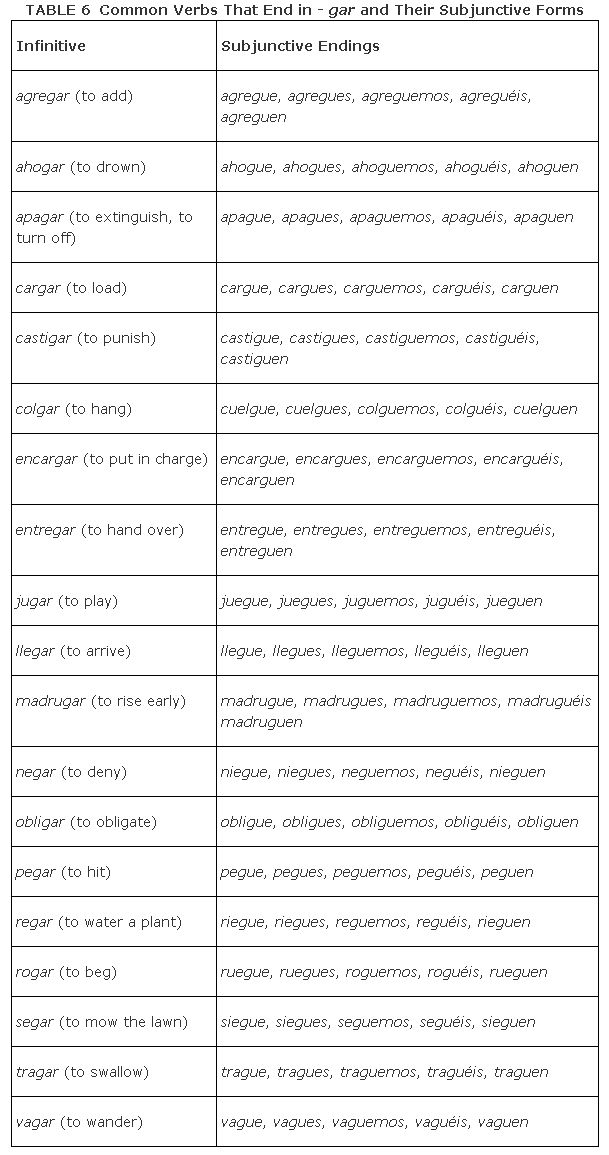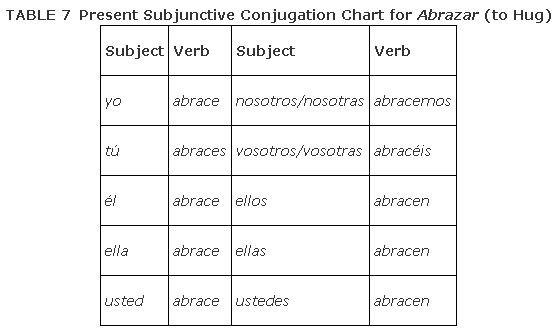Verbs that end in -car, -gar, and -zar
Any verb that ends in ‐car, ‐gar, or ‐zar will use the endings and rules explained above for creating the present subjunctive, but to preserve the correct pronunciation of that letter, it will undergo a spelling change in the letter that precedes the subjunctive ending. You learned about a similar spelling change in the preterit tense that happens for the same reason, but in the preterit, this spelling change affects only the yo form. In the present subjunctive, the spelling change occurs in all forms.
To maintain the hard c sound (like a k), use qu rather than c in all forms of the present subjunctive for any verb whose infinitive form ends in ‐car.
Table provides the subjunctive forms of common ‐car verbs. Because the él form is the same as the yo form, it is not listed.

To maintain the hard g sound (like the g in “go”), use gu rather than g in all forms of the present subjunctive for any verb whose infinitive form ends in ‐gar.
The verbs in Table undergo the g to gu spelling change in all forms of the subjunctive. If the verb is a stem‐changer, the change will be apparent in all forms but nosotros/nosotras and vosotros/vosotras. Because the él form is the same as the yo form, it is not listed.

There is a consistent rule in Spanish that dictates that the letter z change to a c when followed by an e. This spelling change occurs in every subjunctive conjugated form of any verb that ends in ‐zar.
Look at the conjugation chart in Table and use it as an example for the ‐zar verbs in Table .


Table provides the subjunctive forms of common ‐zar verbs. Because the él form is the same as the yo form, it is not listed.
Notice that ‐ar verbs do not undergo a stem change in the nosotros/nosotras or vosotros/vosotras forms but do undergo a stem change in all other forms.
Present subjunctive of - er and - ir verbs
The earlier chant still applies when you conjugate ‐er and ‐ir verbs in the subjunctive present tense: